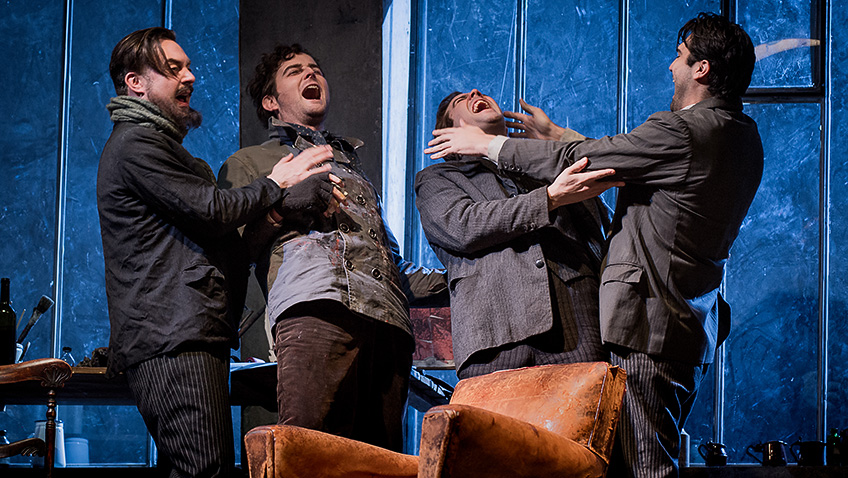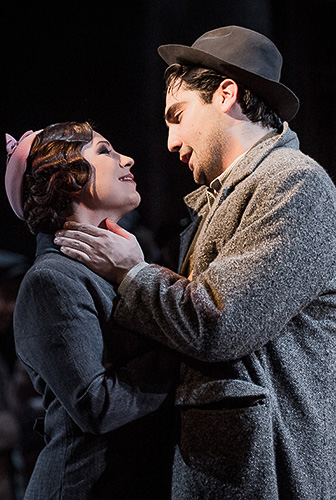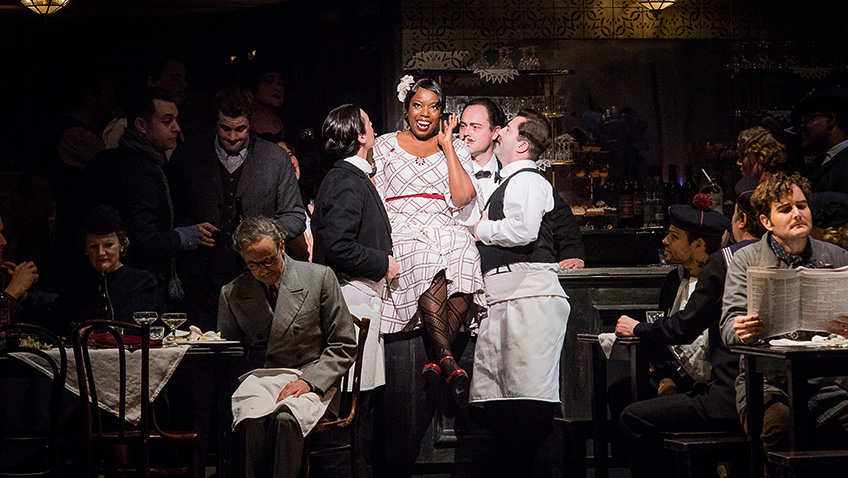Robert Tanitch reviews ENO’s La Bohème at London Coliseum
The good news, and even more so if you were unfortunate enough to have seen Benedict Andrews’s production in 2015, is that ENO has decided to revive Jonathan Miller’s infinitely superior 2009 version instead.
Miller has provided ENO with some of their greatest successes, critically and financially: The Barber of Seville, the Mafioso Rigoletto and the 1920’s Mikado.
Puccini’s La Bohème is one of the great tearjerkers and one of the most popular operas in the repertoire. It is difficult to imagine it ever having a lukewarm reception. But it did at its premiere in Turin in 1896. The audience had just seen Gotterdammerung. Puccini seemed frivolous after Wagner.
The first-rate libretto is based on Henri Murger’s autobiographical novel, Scenes de La Vie de Bohème, first published in 1848 and dealing with his youthful artistic struggles, which had taken place some twenty years earlier.
The novel is the quintessential statement on friendship, lovers’ quarrels, dire poverty, consumption and death among the artists of Paris’s Latin Quarter in the 1830s.
Murger and Puccini sanitised the Bohemian life, making it more acceptable to a sentimental public. Miller updates his production to the early 1930s. Isabella Bywater’s designs are inspired by Brassai’s photographs. The prostitute in Act 3 is straight out of Brassai’s famed portfolio, Paris by Night.
Jonathan Tetelman is a handsome Rodolfo. Natalya Romaniw is a vulnerable Mimi. The wonderful Act Three duet is irresistible. It’s impossible not to be moved by the soaring music. Alexander Joel conducts.
Mimi’s death in an armchair, a characteristic realistic touch by Miller, is perfect for a muted death scene in which she drifts gently into unconsciousness, unnoticed by her friends and also catching audiences seeing La Bohème for the first time on the hop.
 The 1930s setting is perfect for Nadina Benjamin’s flamboyant Musetta and her tantrums. Nicholas Lester is Marcello and he and she have a tempestuous relationship.
The 1930s setting is perfect for Nadina Benjamin’s flamboyant Musetta and her tantrums. Nicholas Lester is Marcello and he and she have a tempestuous relationship.
La Bohème continues until February and is going to give a lot of people a lot of pleasure.
To learn more about Robert Tanitch and his reviews, click here to go to his website






